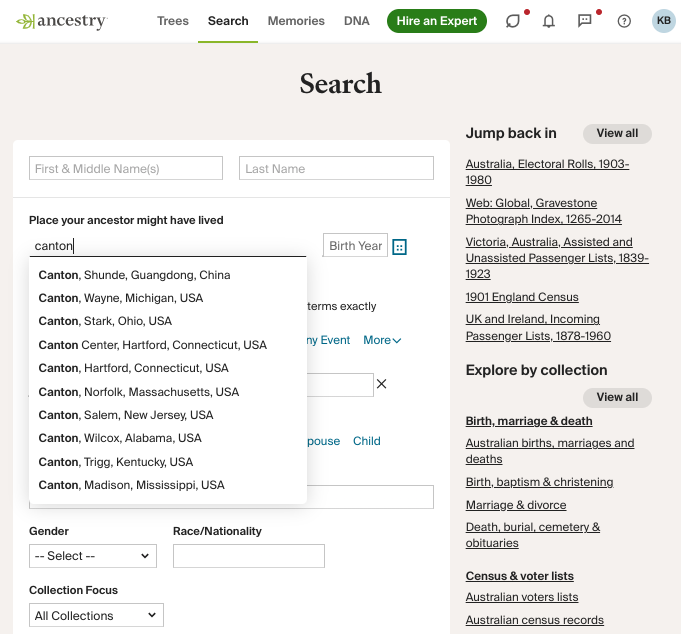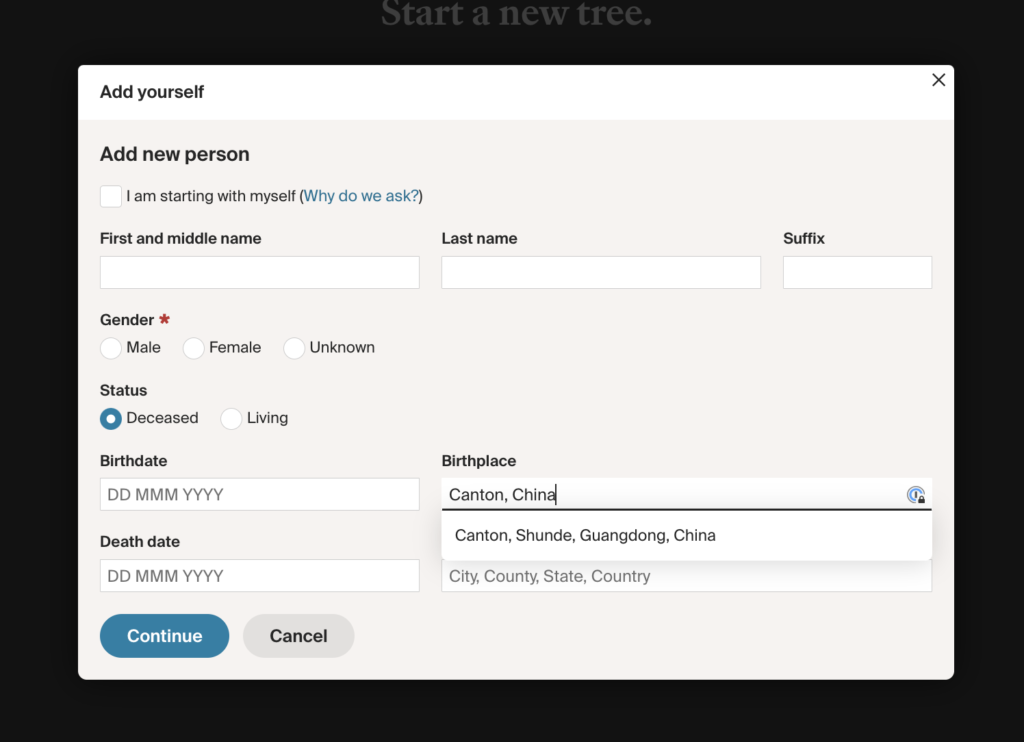Over the past few years, I’ve been contacted by a number of family historians who believe that their Chinese ancestor came from Shunde, Guangdong. While this is entirely possible, this post issues a word of warning to those who might be relying on a family tree from Ancestry.com as the source of this information.

The district of Shunde (順德), or Shuntak in Cantonese, is located directly south of the provincial capital of Guangzhou (廣州, Canton, C: Kwangchow) and today is part of the city of Foshan (佛山, C: Fatshan). Together with Nanhai (南海, C: Namhoi) and Panyu (番禺, C: Punyu), Shunde was one of the Three Counties or Sam Yup (三邑, M: Sanyi), from where many early Cantonese emigrants left for destinations in South-East Asia and around the Pacific, including the Australian colonies.
Shunde was known for its silk production and for its wealth, and Sam Yup people were dominant among the merchants of 19th-century overseas Chinese communities. Those of you familiar with Melbourne’s Chinatown might know of the historic Num Pon Soon Society Building in Little Bourke Street – the ‘Soon’ in ‘Num Pon Soon’ refers to the ‘Shun’ (順) in Shunde. The Num Pon Soon Society (南番順公司 or 會館) was the native place association for people from the Sam Yup.
Given the numbers of Sam Yup men in the Australian colonies, we would expect there to be some descendants in Australia today. But here’s where I think some family historians might be coming unstuck re Shunde in their search for their ancestors’ Chinese origins.
We know that many historical records give the place of origin of Chinese immigrants as ‘Canton’ – a somewhat vague term that could mean either the city of Guangzhou or the province of Guangdong (廣東, C: Kwangtung).
However, Ancestry.com.au, in their standardised list of place names, suggests ‘Canton’ as a city that is part of ‘Shunde’, as shown in the image below: ‘Canton, Shunde, Guangdong, China’. This follows a similar hierarchical format as other places, where it lists City, County, State, Country, or suchlike.
This isn’t such an issue when searching for digitised records, but when you create a family tree and enter ‘Canton, China’ as a place (of birth, for example,) Ancestry prompts you to use their standardised place name, as in the image below.
If you choose this standardised version of the place name, and then view the person’s LifeStory, the place is then given as ‘Guangzhou, Guangdong, China’, as in the second image below.
So, through this process, the vague historical place name ‘Canton, China’ (probably meaning the province) becomes translated to the much more precise place names of Guangzhou (city) and Shunde (county). It is then very easy for an unsuspecting family historian to come across this information and assume that these details are correct, and that the person came from Shunde and/or Guangzhou, when they might have actually come from a very different part of the province of Guangdong.
The moral of my story is the usual one – always check the original source of the information! And unless there is concrete evidence to support it (like a headstone with Chinese characters), I would always be a bit suspicious of an Acnestry family tree or recent family history that says a Chinese ancestor was born in Guangzhou or Shunde.
If you’re interested in knowing more about the Cantonese origins of Australia’s early Chinese communities, have a look at my short article ‘Cantonese connections: The origins of Australia’s early Chinese migrants’ (Traces, issue 6, pp. 43–45), which gives a brief overview and includes a glossary of place names. You might also like to read my 2017 blog post on ‘Finding your Chinese roots‘, which includes a map of the Pearl River Delta.




Thank you so much for pointing this out, Kate. I had certainly fallen into this trap and am now in the process of going through my trees and making corrections thanks to reading this post of yours.
Hi Kate. My great grandfather was Chinese. He came to Beechworth and married the owner of a brothel, Sarah Payne. We have her burial place but sadly not his. We don’t know where he came from in China but an article obtained from a distant relative suggests he came from Southern China. I would love to know more about him but I’m not very computer literate and I come up against a block when it comes to him. We only found this information out after my grandfather died in 1985. My mother didn’t even know about her Chinese heritage.
Dear Dr. Bagnall, According to Chinese philosophy a loan of gold can be repaid in full, but a debt of kindness can never be completely extinguished. Your perseverance, persistence, pertinacity, patience, and passion for Chinese history, and all it implies for those of us blessed with Chinese roots, is an eloquent tribute to your unrivalled knowledge. More importantly, your kindness and goodness of heart in sharing this highly relevant knowledge is treasured, cherished, and appreciated because to forget one’s ancestors is to be like a tree without roots or a river without a source! Heartfelt thanks for your continuous and awesome contribution for present and future generations.
Thank you for these very kind words, Peter!